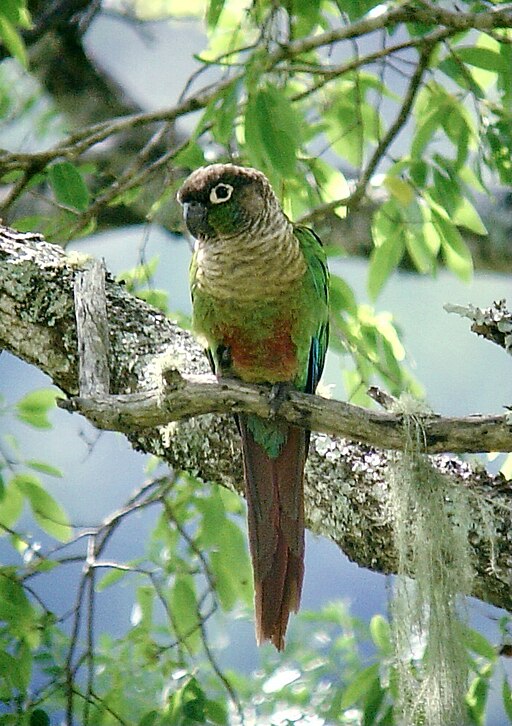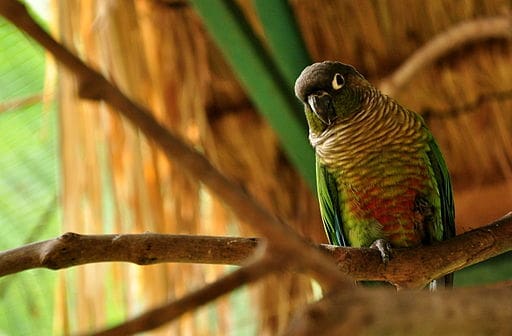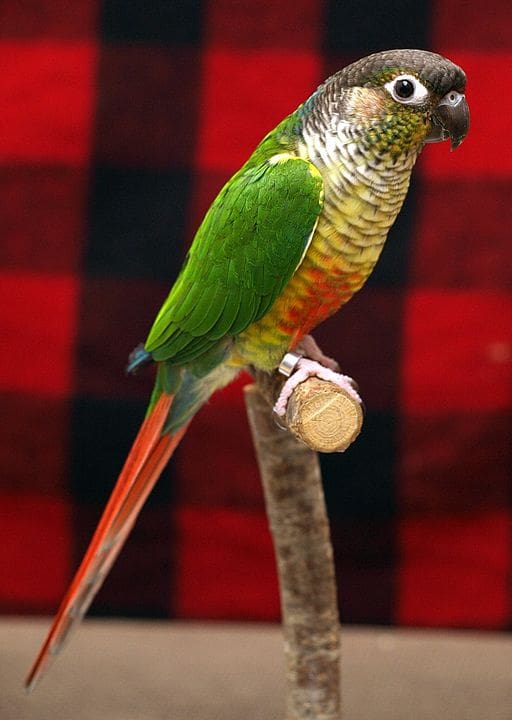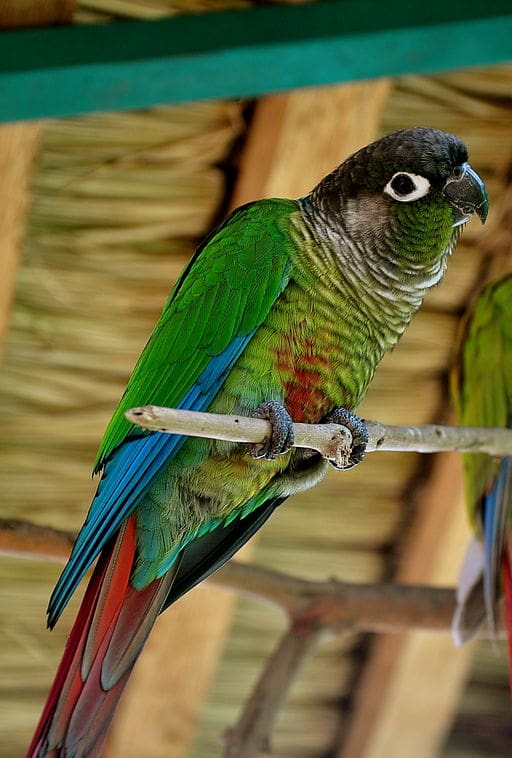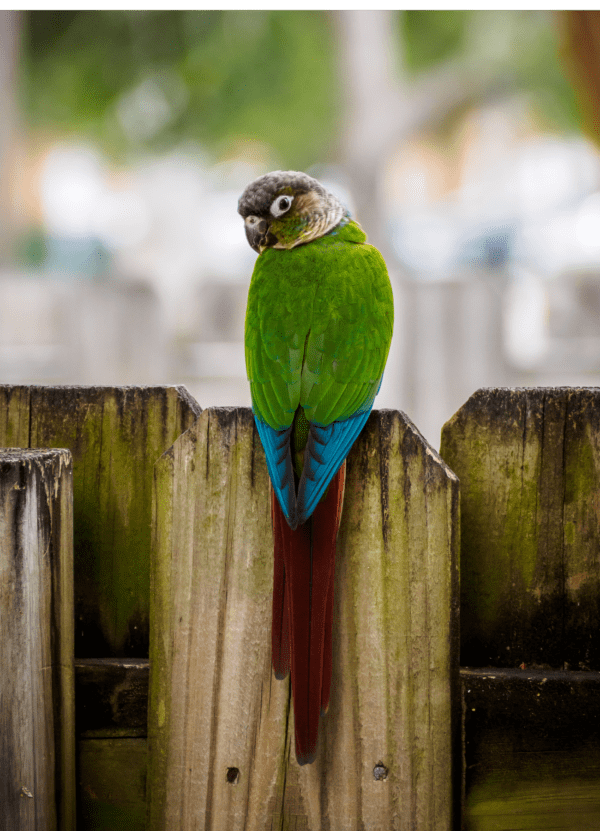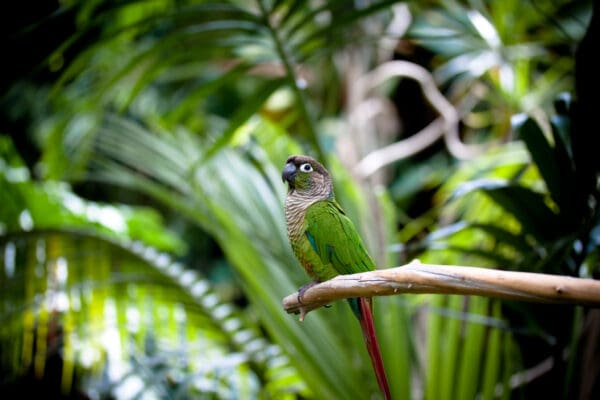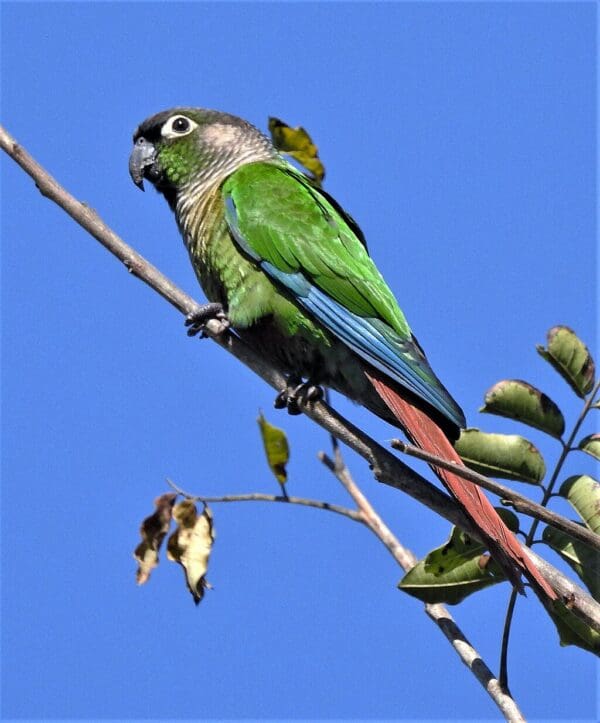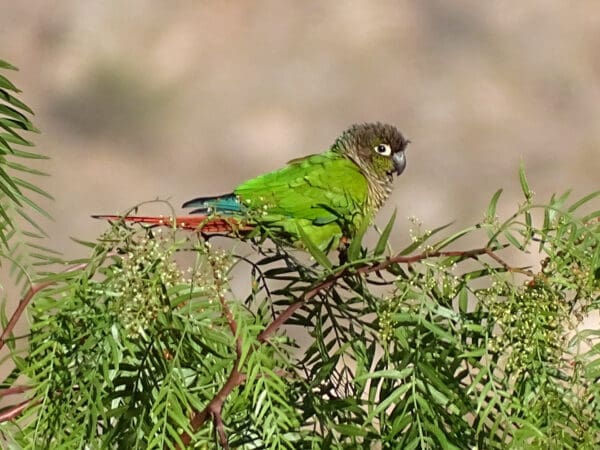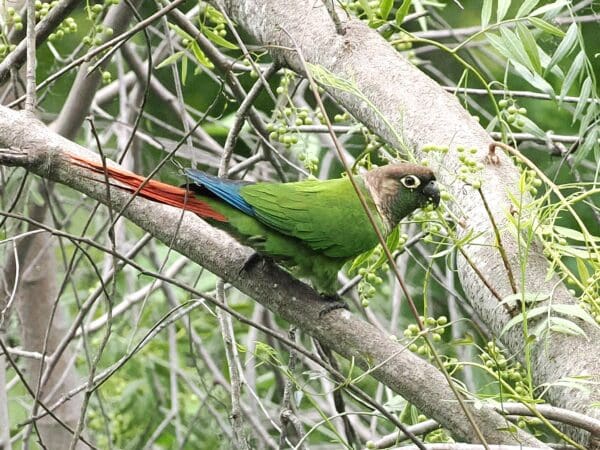Green-cheeked Conure
Also known as:
Argentine Conure, Santa Cruz Conure, Yellow-sided Conure (yellow morph)
Also known as:
Argentine Conure, Santa Cruz Conure, Yellow-sided Conure (yellow morph)
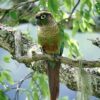
![© Brandon Lim (Uploaded by Snowmanradio) [CC BY 2.0] via Wikimedia Commons A companion Green-cheeked Conure perches on a branch](https://parrots.org/wp-content/uploads/2023/01/wpt_Green-cheeked-Conure_1333-3-100x100.jpg)
![© Toumoto(おぴ~@コザクラインコ) http://opi.toumoto.net or CC-BY-SA-3.0] via Wikimedia Commons A companion Green-cheeked Conure perches on a stand](https://parrots.org/wp-content/uploads/2023/01/wpt_Green-cheeked-Conure_1333-2-100x100.jpg)
![© Brandon Lim [CC BY 2.0] via Wikimedia Commons A companion Green-cheeked Conure perches on a branch](https://parrots.org/wp-content/uploads/2023/01/wpt_Green-cheeked-Conure_1333-1-100x100.jpg)
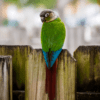

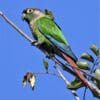
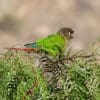
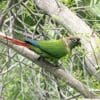
DID YOU KNOW?
The Green-cheeked Conure nests in a hollow, mature tree.

Pyrrhura

molinae
Size:
26 cm (10.1 in)
Weight:
60-80 g (2.1-2.8 oz)
Subspecies including nominate:
six: P.m. molinae, P.m. phoenicura, P.m. restricta, P.m. sordida, P.m. australis, P.m. flavoptera
Colour Adult:
P.m. molinae: Both adults brown crown to nape with green tint; bright green cheeks; pale brown chest barred with either grey/white or dull yellow near centre of breast, with feathers tipped brown; brown/red abdominal patch; scattered blue feathers on hindneck, sometimes forming faint collar; brown/red tail tipped with blue. Beak brown/grey. Eye ring bare and white. Eye brown.
P.m. phoenicura: Both adults as in molinae, but with base of tail green.
P.m. restricta: Both adults different from molinae by having brown/grey breast with white barring; green cheeks with blue tint; obvious blue collar on hindneck; strong blue wash on flanks and undertail coverts.
P.m. sordida: Green morph-both adults as in restricta but with barring on chest barely visible; yellow wash on centre of breast; blue wash on flanks and undertail coverts minimal or absent. Yellow morph-both adults have green cheeks turning yellowish towards back; yellow/white breast, barred with brown; centre of abdomen has orange/red patch; yellow flanks and thighs; yellow undertail coverts with blue suffusion; green rump and upper tail coverts with yellow markings; brown/red tail with blued tips. Beak brown/grey. Eye ring bare and white. Eye brown.
P.m. australis: Both adults paler in general than molinae; brown/red abdominal patch more extensive; dull yellow wash in centre of breast. Smaller beak.
P.m. flavoptera: Both adults as in molinae, but with orange/red bend of wing and carpal edge; alula with blue and yellow/white feathers mixed in.
Colour Juvenile:
P.m. molinae: As in adults but with no brown/red abdominal patch, may be replaced by scattered brown/red feathers. Tail shorter.
Call:
Calls made in flight are rapid and repeated notes, the second note of which is lower in tone; also sharp or melodious sounds made.
More Information:
Content Sources:
CITES
BirdLife International
Cornell Lab of Ornithology/Birds of the World
Parrots: A Guide to Parrots of the World, Juniper and Parr, 1998
Parrots of the World, Forshaw and Cooper, 1977. 2010 edition
Parrots of the World, Forshaw, 2006.
Parrots in Aviculture, Low, 1992.
Lexicon of Parrots, Thomas Arndt.
Psittacine Aviculture, Schubot, Clubb and Clubb, 1992.
Parrots: Their Care and Breeding, Low, 1986.
A Guide to Popular Conures, Dorge and Sibley, 2001.
Captive Status:
Unknown until the 1970s; now fairly common.
Longevity:
10+ yrs
Housing:
Aviary or suspended enclosure, minimum length 2 m (6.5 ft).
Diet:
Fruits such as: apple, pear, banana, cactus fruits, pomegranate, forming about 30 percent of diet; vegetables such as: carrot, celery, green beans and peas in the pod; fresh corn; green leaves such as: Swiss chard, lettuce, sowthistle, dandelion, chickweed; spray millet; small seed mix such as: canary, millet and smaller amounts of oats, buckwheat and safflower; soaked and sprouted sunflower seed; cooked beans and pulses, boiled maize and complete pellet.
Enrichment:
Are avid bathers; provide fresh water daily. Are very active so provide foraging toys, swings, ladders, bird-safe (unsprayed) wood chew toys, vegetable tanned leather toys.
Nest Box Size:
Vertical box 12″ x 12″ x 18″(30.5 cm x 30.5 cm x 46 cm).
Clutch Size:
4-6
Fledging Age:
7 weeks
Hatch Weight:
—
Peak Weight:
—
Weaning Weight:
—
World Population:
Unknown, decreasing.
IUCN Red List Status:
Least Concern
CITES Listing:
Appendix II
Threat Summary:
Not globally threatened. Occurrence in N Paraguay still not proven. Common in much of range with most habitat intact. Not widely traded. In decline in E Bolivia because of rapid forest clearance.
Range:
P.m. molinae: Highlands of E Bolivia.
P.m. phoenicura: S Brazil and NE Bolivia.
P.m. restricta: Santa Cruz, E Bolivia.
P.m. sordida: S Brazil and NW Paraguay.
P.m. australis: S Bolivia and NW Argentina.
P.m. flavoptera: Cochabamba-La Paz border, N Bolivia.
Habitat:
Seen in dense, low forests and woodlands with glades, primary and secondary, including fringes of chaco, savanna, deciduous and gallery woodland in pantanal. Also in moist, mossy cloud forest on E Andes where seen up to 2900 m (9512 ft).
Wild Diet:
Dry seeds, flowers, fruits, berries and nuts.
Ecology and Behaviour:
Gregarious outside breeding season. Seen in flocks of 10-20 individuals and more. Forages in tree-tops. Nest is in hollow tree.
Clutch and Egg Size:
4-6 rounded eggs, 24.0 x 19.5 mm (0.9 x 0.7 in).
Breeding Season:
February. Nest is in tree hollow.
